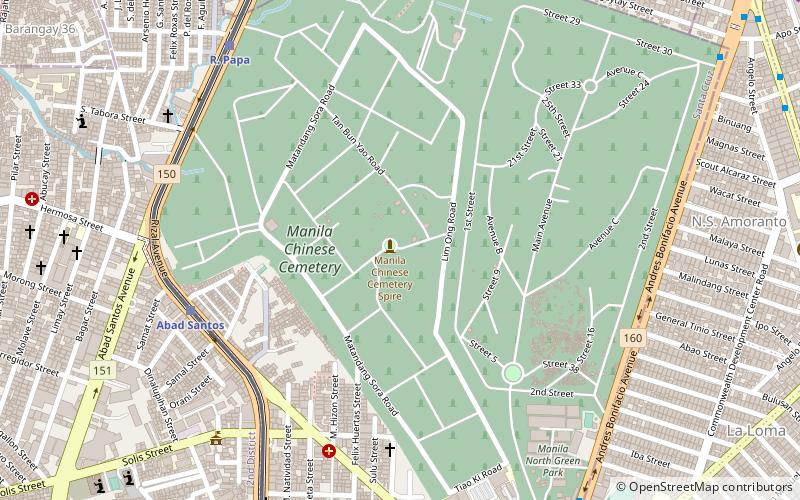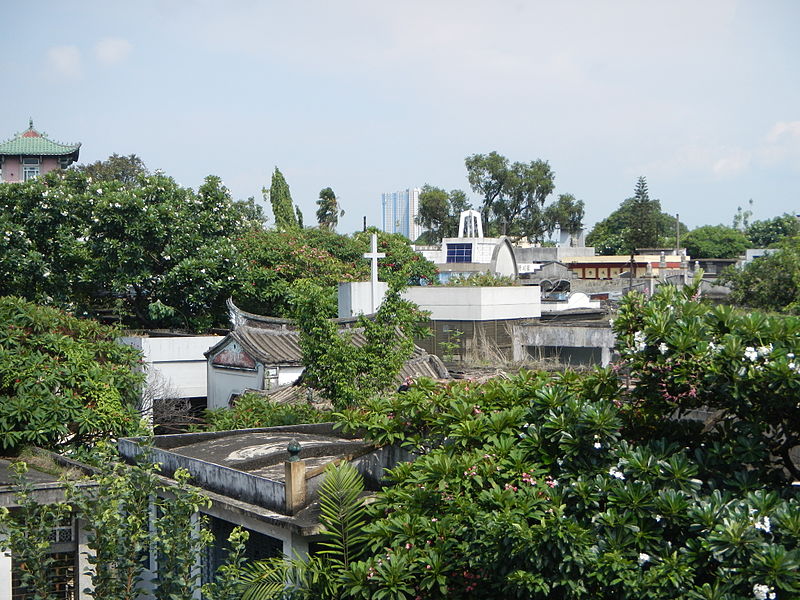Manila Chinese Cemetery, Manila


Facts and practical information
The Manila Chinese Cemetery is the second oldest cemetery in Manila after La Loma Cemetery. The cemetery includes Christian, Buddhist and Taoist burials. The present-day cemetery is a vaguely trapezoidal area of about 54 hectares with an irregular network of roads its old pre-war part along Rizal Avenue Extension, reflecting its gradual evolution and expansion. Meanwhile, the post-war portion has three major roads bisected by minor roads, aligned NW to SE. Matandang Sora, coming from the main entrance in Felix Huertas going towards Chong Hock Temple, is the main road today. Before the Pacific War the main entrances faced Avenida Rizal. This northwestern is the oldest and most historically significant part of the cemetery. The cemetery was witness to many executions during World War II. Among them were Girl Scouts organizer Josefa Llanes Escoda, Filipino Brigadier General and hero during World War II and Boy Scouts of the Philippines charter member Vicente Lim, literary geniuses Rafael Roces and Manuel Arguilla, star athlete-turned-guerrilla spy Virgilio Lobregat, and Chinese Consul General Yang Guangsheng. Apolinario Mabini was also buried in the cemetery before his remains were transferred to Batangas on July 23, 1956. ()
Manila Chinese Cemetery – popular in the area (distance from the attraction)
Nearby attractions include: Manila North Cemetery, Archdiocesan Shrine of Espiritu Santo, Dangwa flower market, Abad Santos Avenue.
Frequently Asked Questions (FAQ)
Which popular attractions are close to Manila Chinese Cemetery?
How to get to Manila Chinese Cemetery by public transport?
Light rail
- Abad Santos • Lines: 1 (9 min walk)
- R. Papa • Lines: 1 (10 min walk)
Bus
- La Loma • Lines: 39 (12 min walk)
- A. Bonifacio Market • Lines: 311, 39 (15 min walk)
Train
- Blumentritt (17 min walk)
- Solis (20 min walk)











